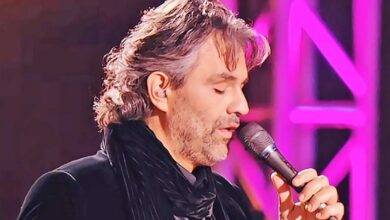This Popular Dance From The 1950s, Do You Remember It Today
In February 1958, a vibrant dance movement emerged in American high schools, capturing the energetic essence of youth culture during the early days of rock ‘n’ roll. This phenomenon, known as “The Stroll,” was much more than just a dance; it was a reflection of a generation’s spirit. The origins of The Stroll can be traced back to African American communities, where it was embraced for its infectious rhythm and communal enjoyment. However, it didn’t fully blossom into a national sensation until it found a prominent platform on television. This was largely thanks to Dick Clark’s iconic show, “American Bandstand,” where the dance was showcased, inspiring teenagers from coast to coast to take part in this latest craze at local assemblies, gatherings, and sock hops.
The format of The Stroll was ingeniously simple yet immensely engaging. Participants formed two lines, facing each other and creating an aisle down the middle where couples could parade, showcasing their unique moves. As the music played, dancers strutted their stuff, taking turns to dance down the aisle, fully expressing themselves. This improvisational aspect allowed for a blend of synchronization and individuality, inviting participants to shine in a social setting. The communal nature of The Stroll promoted interaction and fun among friends and peers, creating a sense of belonging and joy during a significant time of change in American society.
The song that epitomized this dance was aptly titled “The Stroll,” performed by The Diamonds, a Canadian vocal group renowned for their doo-wop style and harmonious melodies. The group’s dynamic presence helped to propel the dance into mainstream consciousness, as their catchy tune became synonymous with the movements that had taken hold of the youth’s imaginations. Lead singer Dave Somerville, with his booming baritone voice, delivered the lyrics with a charm that resonated deeply with listeners, and his contributions played a vital role in the dance’s popularity. The Diamonds’ ability to blend rhythm and melody allowed them to strike a chord with the adolescent audience, who were eager for anything that promised excitement and leisure.
As The Stroll gained momentum, it not only became a dance but also a cultural symbol of the 1950s. In an era characterized by social change and the burgeoning civil rights movement, this dance managed to bridge gaps between different communities. It was a unifying force at a time when racial and social divisions were prevalent across America. The simplistic nature of The Stroll made it accessible to people from various backgrounds, inviting them to join in on the fun. This spirit of inclusivity paved the way for a generation that craved connection and expression, echoing the broader societal shifts taking place in the country.
Moreover, the impact of The Stroll extended into the fashion choices of its participants. Teenagers dressed to impress, often donning the latest styles that reflected the freshness and liberation of the time. This was an era that celebrated youth and the breaking of traditional norms, and The Stroll served as a release for that pent-up energy. Social gatherings became vibrant celebrations of music and movement, where participants practiced their routines in the hopes of dazzling their friends. The spirit of competition combined with the sheer joy of dancing made it a memorable part of adolescent life, creating lasting friendships and joyful memories.
Television played a crucial role in solidifying The Stroll’s place in popular culture. “American Bandstand” not only provided exposure to the dance itself but also to the music that accompanied it. Performances by The Diamonds and other emerging artists helped solidify the connection between dance and the rock ‘n’ roll genre that was sweeping the nation. Teenagers eagerly tuned in to catch the latest trends, further fueling the popularity of The Stroll across schools and social events throughout the country. The nationwide broadcast of the dance became a significant cultural touchstone, allowing young people to be part of something larger than themselves.
The lasting legacy of The Stroll can still be felt today, as it remains an iconic representation of the 1950s youth culture. Its influence is seen in various forms of dance and music that followed, serving as a touchpoint for modern forms of expression. The spirit of togetherness and the celebration of individuality that The Stroll championed continues to resonate, reminding us of the importance of community and shared experiences. As dances evolve, the foundational elements introduced by The Stroll live on, showing that the joy of dancing is timeless.
In today’s context, The Stroll has often been revisited in movies, television shows, and social events, evoking nostalgia and introducing new generations to the dance. It showcases how societal trends can transcend time, reaching into the lives of both young and older audiences alike. The melody of The Diamonds’ “The Stroll” remains a catchy reminder of a carefree, revolutionary time—an era when music served as a vehicle for connection and excitement.
Additionally, it’s worth noting the biography of Dave Somerville, the lead singer of The Diamonds, who not only contributed to the success of the group but also shaped the sound of doo-wop music during this period. Born on November 2, 1933, in Toronto, Canada, Somerville’s rich vocal talent propelled The Diamonds to stardom with hits that defined an era. His captivating performances and charismatic presence helped bridge the gap between various musical styles and audiences, making him an influential figure during the rise of rock ‘n’ roll. His legacy, like that of The Stroll, is forever entwined with the cultural narrative of mid-20th century America. The harmonious tunes that characterized this time symbolize an undeniable passion for music and the joy it brings to life.
?si=CbHsPwTM-VodZAIG





